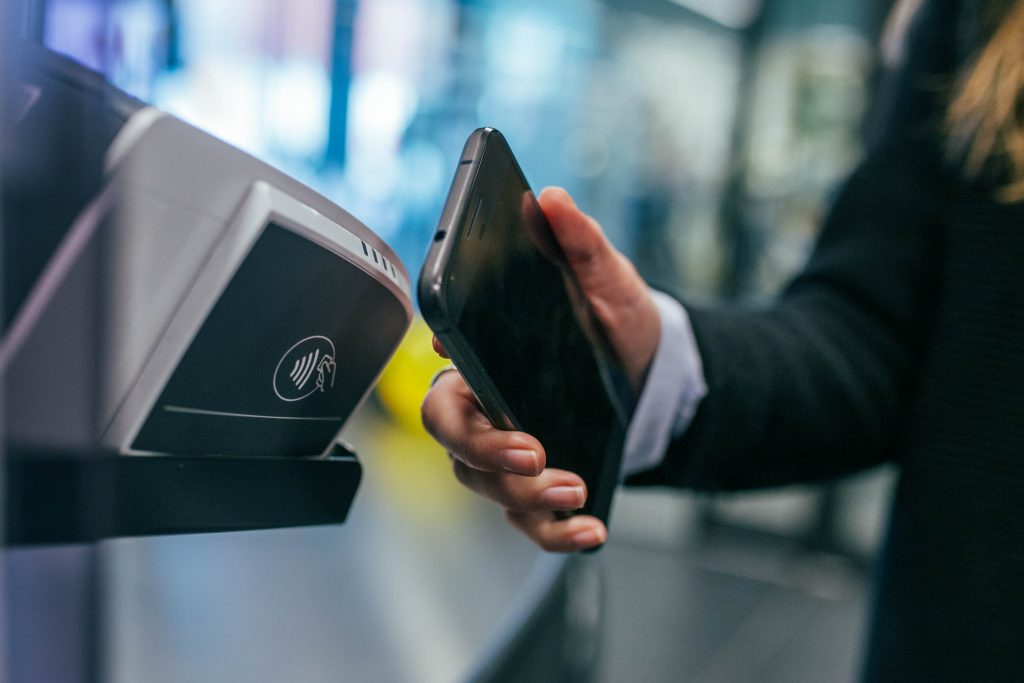Transforming financial behaviors: Part one
I am hearing a lot about digital transformation at the moment. It’s woven through current research projects, in opinion pieces all over the web, and is top of our internal agenda at Incite too. But as a consumer there is one area where I feel left behind.
I’ve been in San Francisco for three months and, while there is plenty to love, when it comes to banking I have taken a step backwards. Instead of tapping away with contactless, I’m now back to signing actual paper. It is well documented that the USA lags behind on ‘tap to pay’, but with more city transit systems starting to accept contactless that is likely to change over this year and beyond.
This got me wondering if the ramping up of contactless could be the catalyst to transform other digital financial behaviors – such as mobile payments.
Contactless benefits
I see benefits of contactless for everyone involved:
- Consumers have faster check out experiences: less time standing in line and more time doing what you love. Plus, real-time balance updates should help consumers budget better, meaning institutions can tick the ‘encouraging responsible spending’ box.
- Industries that adopt this now will have a point of differentiation: think QSR, gas stations, retailers. Serving customers faster could mean more sales, a competitive advantage or at least something worth communicating about.
- Merchants and banks will have access to a new stream of ‘big data’ ripe for analysis: what people are buying ‘on-the-go’, how much they spend on ‘fast’ transactions, when speed matters. This might help with trend spotting and future innovation.
Despite these benefits, the banking system (institutions and merchants) have lagged in providing contactless for consumers, partly because consumers aren’t demanding it. Well, then, create demand. Did we need Uber and Lyft? Not until they arrived. And while I am sold on the benefits of contactless, others are not. So where is the industry’s attempt to generate interest and change behaviour? Visa is pushing wearable payment technology for the 2018 PyeongChang Winter Olympics: clearly they see the potential. But what about closer to home?

Contactless biases
This won’t necessarily be difficult to encourage. The consumer arguments against using contactless are rooted in behavioral biases that favor the status quo:
- Default habits: why change what I do now? Especially if I don’t see anything wrong with it.
- Loss aversion: I like signing for payments. It allows me to check the amount, add a tip, and keep the receipt for my records. Don’t take these things away from me.
- Self-efficacy: I’m not sure how to use contactless, and I’m not sure I trust it. Surely it increases the risk of fraud?
But these can be overcome:
- Break the habit and use positive reinforcement to embed a new one. For example, incentivise the first few contactless transactions to kick-start use, then with each one send an instant notification confirming the amount, location and payment method used.
- Now loss aversion can work the other way: where is my notification? Consumers won’t want to lose the instant haptic and visual sensory engagement that says; “yes I bought something, and I wasn’t de-frauded!”
- As for self-efficacy, spell out how to use contactless and make people feel good when they do. Think tick boxes, green signposting and positive language (“Success! You purchased in Walgreens using tap-and-go – what a hero!”). Consumers will remember how this made them feel, and seek to repeat that.
A stepping stone to mobile payments?
It’s been possible to pay with your mobile since 2015, but adoption has been slow. Estimates suggest only around 15% of those who could use services like Apple Pay or Android Pay are actually doing so. Yet this shares all the benefits of contactless and more; you don’t need your physical card and biometrics can be used for security.
MasterPass, Samsung and Google are all keen for this to take off, and I’ve seen food and drink stalls at festivals sponsored by Apple Pay, but there is limited traction. As this shares the barriers and misunderstanding of contactless, maybe encouraging the latter will pave the way for mobile pay.
Transformational contactless interventions
With all this in mind, and given my fundamentally selfish aim of wanting banking here to catch up, here are my top three ideas for getting consumers on the path to contactless faster:
- Tap & Go tipping: a swipe box by the door of a QSR, or on the bar in a pub, collecting a set amount in a single tap.
- Laundry facilities: no more mountains of quarters, just tap and wash.
- Charity donations: busy commuters can alleviate their guilt while barely breaking their stride.
Any other ideas? If you’d like to chat more about anything I’ve raised here, please get in touch. You can read part two from the series here.



